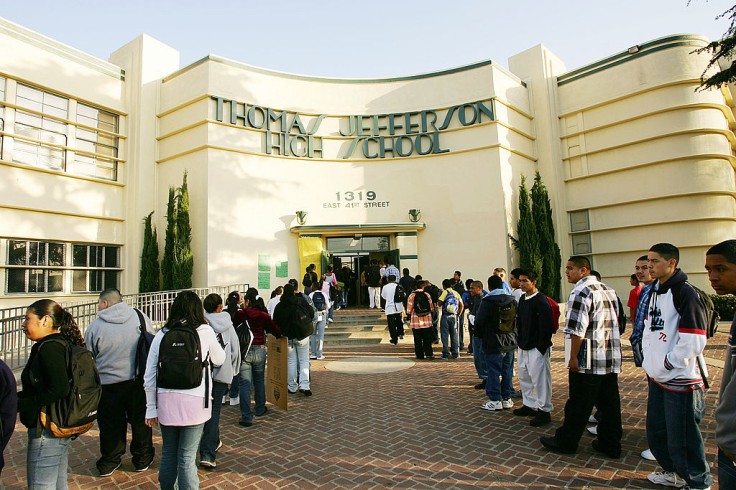
A parent group challenges the admissions policy over allegations of racial discrimination at Thomas Jefferson High School.
In a development that could reshape educational policy nationwide, a parents' group supported by a conservative legal organization has petitioned the U.S. Supreme Court to examine an admissions policy at Virginia's renowned Thomas Jefferson High School for Science and Technology.
This policy, designed to enhance diversity, has come under scrutiny with allegations of racial discrimination. The case's emergence underscores broader questions about racial equity in education and the parameters of admissions policies.
Examining Virginia's Thomas Jefferson High School Admissions Policy
At the heart of the controversy is the admissions policy enacted by the Fairfax County School Board for Thomas Jefferson High School in 2020.
A distinguished institution, it consistently ranks among the finest public high schools in the United States.
The policy aimed to transform the student body composition by eliminating a standardized test from the admissions process, placing enrollment caps on students from district middle schools, and reserving seats for high-performing students from each middle school. As the new policy took effect, the school's demographic landscape shifted noticeably.
The representation of Black and Hispanic students increased, demonstrating initial strides toward greater inclusivity. However, the percentage of Asian American students experienced a significant drop, decreasing from 73% to 54% within the policy's first year. These demographic changes prompted the Coalition for TJ, a parent group representing diverse stakeholders, including Asian American parents, to take legal action.
The Coalition contends that despite its outward appearance of neutrality, the admissions policy was crafted with an implicitly racially discriminatory intent.
This allegation raises concerns about potential violations of the 14th Amendment's equal protection clause in the U.S. Constitution.
The case initially unfolded in U.S. District Court, where Judge Claude Hilton ruled in favor of the parents' group, emphasizing the potential discriminatory implications of the policy.
However, the 4th U.S. Circuit Court of Appeals subsequently overturned this decision, highlighting the school board's legitimate interest in fostering diverse student backgrounds.
Supreme Court Implications and Societal Repercussions
The case now stands on the precipice of a potential landmark decision, as the Coalition's legal team urges the Supreme Court to review the matter.
Their argument centers on the idea that the recent Supreme Court ruling abolishing affirmative action in college admissions might inadvertently enable discriminatory outcomes through ostensibly race-neutral policies.
This raises a crucial question: Can a policy perpetuate racial discrimination, even unintentionally, without explicit consideration of race?
Should the Supreme Court decide to take up the case, the implications could span beyond Virginia's borders.
The decision could establish a precedent for admissions policies in K-12 educational institutions, shaping the landscape of diversity and equity within student bodies.
The Court's ruling will have substantial influence over ongoing discussions about equal educational opportunities and the role of race in shaping admissions policies.
Charting the Course Ahead: Potential Scenarios and Ongoing Dialogues
As the legal battle continues, a multitude of stakeholders-including educators, policymakers, and advocates-await the Supreme Court's verdict on whether to hear the case.
The outcome could potentially redefine the boundaries of permissible race-conscious policies within educational institutions and further fuel the discourse on diversity, accessibility, and fairness in admissions procedures.
The Fairfax County School Board's response to the petition remains pending, as they have refrained from commenting on the recent developments.
This case underscores the intricate balance between diversity objectives and potential unintended consequences, catalyzing broader conversations about societal norms, educational benchmarks, and the legal interpretation of equal protection.
Against the backdrop of an increasingly equity-conscious nation, Virginia's Thomas Jefferson High School becomes a symbol of the ongoing endeavor to navigate the intersection of race, education, and policy.
As the legal process unfolds, the Supreme Court's verdict will undoubtedly leave an indelible mark on the ever-evolving landscape of admissions policies across the United States.